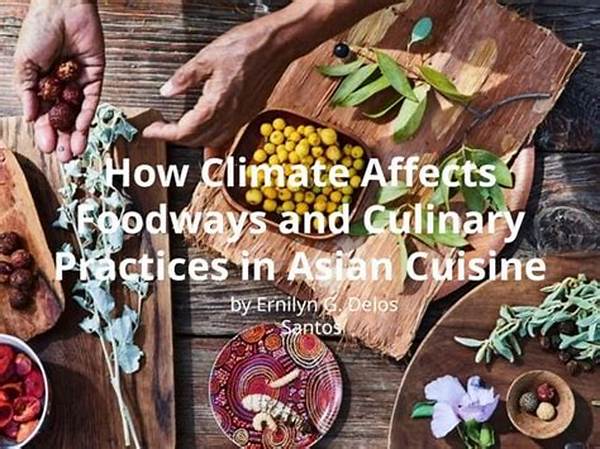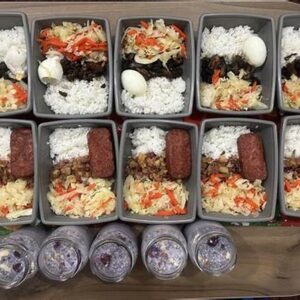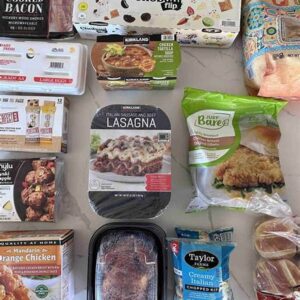How Climate Affects Meal Prep in Indonesia’s Humid Regions
Read More : Jakarta Influencers Share Best Meal Prep Tips For Students
The rich tapestry of Indonesia’s cuisine is a symphony of flavors, colors, and textures that are as diverse as its 17,000 islands. Whether it’s the fiery sambals of Java or the sweet rendang of Sumatra, each dish tells a story steeped in history and culture. However, a factor that we often overlook in these culinary narratives is how climate affects meal prep in Indonesia’s humid regions. The humidity not only shapes what’s cooked but how it’s prepared, served, and even consumed.
Picture this: in the sticky heat of Jakarta or the humid air of Surabaya, a chef meticulously plans each meal. Unlike those in cooler climates, they have to consider not only the ingredients and cooking techniques but also the weather. The climate dictates the shelf life of fresh produce, the rate at which food spoils, and even the types of cooking methods that can be employed. For instance, slow-cooked delights might not be ideal in an air that already feels like a sauna. Instead, quick methods that retain flavors while reducing the time spent in a steamy kitchen are more suitable.
But it’s not all about obstacles; there is also a sense of creativity and adaptation. Climate challenges push local chefs to innovate, not by using advanced kitchen technology but through traditional practices passed down over generations. The high humidity becomes a playground for fermentation processes, giving birth to delicacies like tempeh or tapes. These foods are deeply rooted in Indonesia’s eating habits and owe their existence to the climate. It’s a beautiful dance between nature and nurture, balancing the challenges with creative solutions.
Navigating Meal Preparation: Strategies and Tips
Understanding how climate affects meal prep in Indonesia’s humid regions is not merely academic. For home cooks and food entrepreneurs, it’s the difference between a successful meal and a culinary disaster. From using airtight containers to exploring climate-smart recipes, adaptability is key. Discovering methods that work with the climate rather than against it results in fresher, more sustainable meals that are as delightful to eat as they are to prepare.
—5 Paragraph Introduction
In the bustling markets of Indonesia, where the air is thick with humidity and the aroma of spices, meal preparation takes on a unique character. Unlike in many parts of the world where climate conditions are relatively predictable, Indonesia’s tropical and humid climate presents both challenges and opportunities for chefs and home cooks alike. The humidity affects not just the choice of dishes but also their preparation, storage, and even presentation. While some might find this daunting, others see it as an avenue for culinary innovation. Indeed, how climate affects meal prep in Indonesia’s humid regions offers a fascinating glimpse into the art of cooking under the pressures of Mother Nature.
Imagine waking up in Bali or Makassar, where the sun kisses the earth with relentless heat. The local kitchens are brimming with colorful produce, yet behind the vibrant scenes lies a daily struggle with spoilage. The quest for fresh ingredients is relentless because the humidity has a talent for turning the freshest greens into soggy relics overnight. Refrigeration helps but is not always an option in rural areas, so local cooks rely on age-old preservation techniques to keep their stockpile viable and diverse.
The impact is evident not just in how food is prepared but also in local eating habits. Meals are planned around the fact that leftovers are a rarity, pushing families to cook only what can be consumed in one sitting. Further adding layers to this complexity is the unpredictability of weather patterns, which can swing from torrential rains to blazing sunshine within hours, affecting everything from catch rates at sea to market availability of key ingredients.
Yet, rather than viewing these as setbacks, many see them as an opportunity to celebrate local tradition and ingenuity. For instance, the art of fermentation, crucial in making staples like tempeh or kimchi, gains a new layer of significance. These processes, thriving in warm, humid conditions, have become an integral part of the Indonesian food palette, showcasing how climate affects meal prep in Indonesia’s humid regions in delicious ways.
One cannot overlook the resourcefulness of Indonesian cooks — a drive rooted deeply in tradition yet reaching ambitiously towards the future. By capitalizing on natural conditions, they turn challenges into opportunities, creating dishes that narrate tales of resilience and adaptation. In turn, these meals are shared, celebrated, and cherished, offering an intimate look into how climate affects meal prep in Indonesia’s humid regions and fostering a deeper appreciation for this culinary paradise.
The Evolution of Meal Prep Techniques
Understanding Climate-Induced Adaptations
The journey of preparing food amidst Indonesia’s dynamic climate has led to a wealth of knowledge and adaptive techniques. Traditional methods of curing, drying, and fermenting have not only stood the test of time but have thrived due to the conducive environment provided by high humidity. This symbiotic relationship between climate and culinary technique is not merely reactionary; it is celebratory, steeped in cultural pride and sustainability.
Finding Harmony: Balancing Ingredients and Climate
Sampling Exotic and Local Flavors
To further appreciate how climate affects meal prep in Indonesia’s humid regions, one must delve into the local palate, characterized by exotic spices and indigenous herbs. These ingredients, tailored perfectly to thrive in warm, wet conditions, are bastions of flavor — they define not just the taste but also the identity of the region’s cuisine. Cooking with such ingredients allows chefs to create robust dishes that maintain their integrity despite climatic constraints, a testament to mastering the art of culinary balance.
—Actions: Adapting to Indonesia’s Humid ClimateHow climate affects meal prep in Indonesia’s humid regions: Actions for adaptation
—
Food preparation is an essential part of Indonesian life, deeply intertwined with the nation’s cultural and environmental tapestry. However, the steamy embrace of humidity isn’t merely a backdrop; it is a defining character in this culinary play. Recognizing how climate affects meal prep in Indonesia’s humid regions requires a mindful approach to cooking practices and ingredient choices. It is about embracing the climate’s role in shaping the dining experience, turning challenges into delicious opportunities.
The utilization of airtight containers, for instance, becomes crucial in extending the life of perishable goods. Meanwhile, daily market trips gain added significance — not just in ensuring fresh goods but in their role as a social and cultural ritual. Adapting cooking methods to utilize quick-cooking techniques further showcases an ingenious dance between climate realities and culinary potential. These actions cultivate an ethos of sustainability, safeguarding the richness of Indonesian cuisine for generations to enjoy.
Celebrating Traditional Techniques
Understanding climate’s impact on meal prep doesn’t just stop at practical adaptations but also embraces a cultural renaissance. The humid atmosphere lends itself beautifully to the art of fermentation and preservation, processes deeply rooted in tradition. Such techniques thrive, offering not just food security but a continued celebration of cultural identities. By exploring traditional methods, you gain resilience against climate unpredictability, allowing you to appreciate how climate affects meal prep in Indonesia’s humid regions on a deeper, more meaningful level.
Illustrating Climate’s Impact on Meal Prep
The vivid interplay between humidity and meal preparation in Indonesia is more than a culinary challenge; it’s a call to action. It inspires innovation, drives sustainability, and enhances cultural appreciation. By understanding and adapting to how climate affects meal prep in Indonesia’s humid regions, chefs, home cooks, and food enthusiasts alike can create flavorful, sustainable dishes that respect both the environment and cultural tradition. This adaptive spirit ensures that the richness of Indonesian cuisine continues to thrive, celebrated and savored by locals and visitors around the world.




